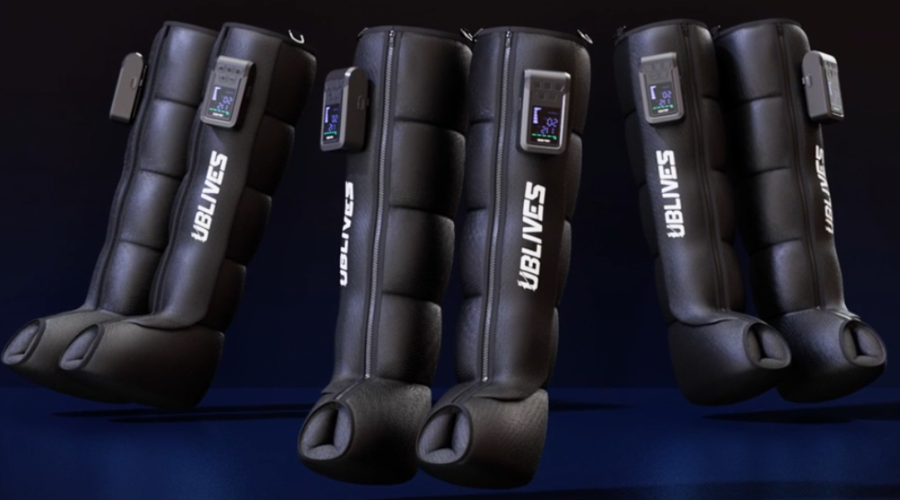
Is Massage Good for Sciatica?
Absolutely—if you do it right.
Massage can be one of the most effective non-invasive ways to ease the pain of sciatica. Whether your pain radiates from your lower back or burns down the back of your leg, targeted massage therapy can help reduce muscle tension, improve circulation, and calm down irritated nerves.
Let’s break down why massage works, what causes sciatica, and how tools like compression boots, massage guns, and leg massagers can make a difference.
What Is Sciatica and Why Does It Hurt So Bad
Sciatica isn't a condition itself—it. It's a symptom. It happens when the sciatic nerve, the longest nerve in your body, becomes compressed or irritated. That compression causes pain that often starts in the lower back, travels through the buttocks, and radiates down the back of your leg, sometimes reaching the calf or even foot.
The pain varies. It might feel like a dull ache, a sharp stabbing sensation, or a constant burning. Some people experience tingling or numbness, while others have trouble standing or sitting for long.
Traditional remedies like painkillers, heating pads, or bed rest only offer temporary relief. That’s why more and more people are turning to massage therapy.
What Causes Sciatica?
When the soft cushion between spinal bones bulges out and presses on the sciatic nerve, this is one of the most common causes, especially in people aged 30 to 50.
Narrowing of the spinal canal that puts pressure on nerves, often due to age-related changes like arthritis or bone overgrowth.
A sedentary lifestyle, slouching at a desk, or sitting with crossed legs for hours can lead to chronic tightness in the lower back and hips, increasing pressure on the sciatic nerve over time.
A tight piriformis muscle deep in the buttocks that compresses the sciatic nerve as it passes underneath or through it, leading to sharp or radiating pain.
The discs in your spine lose hydration and flexibility. When they shrink or collapse, they can irritate nearby nerves, including the sciatic nerve.
Car accidents, falls, or sports injuries that affect the spine, hips, or pelvis can lead to inflammation or misalignment, triggering sciatica symptoms.
In some cases, the combination of weight gain, posture changes, and shifting pelvic alignment can lead to sciatic nerve compression in expectant mothers.
Related reading: What a leg compression machine does for your legs

Can Massage Really Help with Sciatica?
Yes, when done properly, a massage not only feels good, but it can also help with sciatica. This is because massage can reduce inflammation by increasing blood circulation in the lower back and legs. It relaxes tense muscles that are putting pressure on the sciatic nerve.
It promotes lymphatic drainage and the release of endorphins, which help the body eliminate toxins that may be irritating the nerve tissue.
And importantly, it can speed up the recovery process, so you don't have to rely on medication all the time.
Best Massage Techniques for Sciatica Relief
When it comes to relieving sciatica, not all massage methods are created equal. The Ublives tools that can help bring them home.
Air Compression Therapy
Best for improving blood flow and reducing swelling in the legs. Recommended tool: Ublives Leg Compression Boots
These boots deliver medical-grade pressure (adjustable up to 120 mmHg) across four zones—foot, calf, knee, and thigh. Helps flush out inflammation. Promotes circulation in the veins and lymphatic system. Excellent for post-workout, long workdays, or prolonged sitting
Just 20 minutes a day can noticeably reduce leg pressure and nerve discomfort.
Vibration and Kneading Massage
Ideal for desk workers or light daily use. Recommended tool: Ublives Leg Massager
This all-in-one unit wraps around the legs and provides: Air compression, gentle kneading, and heat therapy; Relief for lower legs and thighs; A great solution for daily recovery from long hours of sitting or light walking
It’s plug-and-play, user-friendly, and especially helpful for mild to moderate sciatica.
How Often Should You Massage Sciatica?
There’s no answer, but if you're using home recovery devices like a massage gun or leg compression boots, once a day or every other day is usually a safe and effective place to start.
Each session should last around 20 to 30 minutes. That’s enough time to target tight areas, relax deep muscle layers, and stimulate blood flow, without overworking the tissue. If you're new to massage therapy or using a device for the first time, start on the shorter end and gradually work your way up.
Intensity matters just as much as frequency. Start with the lowest setting, especially if you're using a deep tissue massage gun like the UBLIVES Pro Massage Gun. Too much pressure, too soon, can irritate the sciatic nerve instead of calming it. Let your body guide you; discomfort is okay, sharp pain is not.
Conclusion
Sciatica can be frustrating, painful, and disruptive, but it’s not something you have to live with forever. Massage therapy is one of the most effective and non-invasive ways to manage sciatica symptoms by targeting the root causes: tight muscles, poor circulation, and nerve compression. With consistent use, the right massage tools can help reduce pain, restore mobility, and speed up recovery.
For everyday relief and long-term support, Ublives makes it possible to take control of your sciatica, right from the comfort of home. Don’t wait for the pain to get worse. Start your recovery journey with tools that are built to help your body heal, one session at a time.
